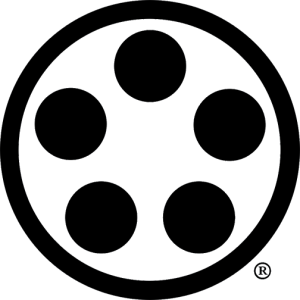The Dojo
Throughout the world there are numerous training facilities for the Asian martial arts. However, very few of these places rate the title of dojo. The more commonly used terms of studio or gymnasium are, in general, much more appropriate. These institutions teach only the shell of an art and neither understand nor attempt to transmit its heart. There is no great harm in this, for the average customer at such a school is only interested in changing his body. He has no desire to alter his personality.
The word dojo may be literally translated as "way-place." The word implies that this is a place where the students will attempt to realize the ultimate reality of their chosen art. A school teaches techniques, as does a dojo. However, in a dojo, techniques are viewed as only a means to an end. The techniques must be mastered, but that is only the beginning, not the end, of study. The goal of a school is to teach a person new things; the goal of a dojo is to transform the person into something new. A school teaches how to kill; a dojo teaches how to die. The member of a dojo does not think about fighting. Neither does he think about not fighting. He tries to go beyond this level and comprehend the very essence of conflict.
Although the initial training in a school and a dojo is identical, the goals are entirely different. So are the methods. A school will have a teacher and his students; a dojo will have a master and his disciples. The student attends classes to acquire new knowledge; the disciple, known as a deshi, attends classes to undergo a spiritual transformation. The act of becoming a deshi is the first stage in this process. A prospective deshi, before being accepted, must demonstrate a proper attitude of nyunanshin. This means having a flexible spirit and being capable of being molded by the dojo. Becoming a deshi requires that a person surrender his ego to the headmaster, the sensei. In effect, he says, "Here I am. Do with me what you will."
Physically, a proper dojo will have a rather stark and functional appearance. Reflecting a definite Zen influence, in a dojo beauty is achieved not with things but with the absence of things. A dojo is not a church, but it has many of the characteristics of a religious institution. It is not a gymnasium, but, at first glance, physical exercise will appear to be the primary activity. It is not a military barracks, but the discipline is similar to military discipline.
Discipline is perhaps the most distinctive difference between a modern school and a traditional dojo. Modern schools make many concessions in their curricula and training methods to suit the requirements of their students. On the other hand, the dojo is inflexible—the deshi does all the adapting. Rigid discipline makes this process both inevitable and impersonal.
“Discipline is perhaps the most distinctive difference between a modern school and a traditional dojo.”
Each square inch of the dojo floor has a certain seniority relative to every other square inch and it must be treated with the proper respect. A deshi is not allowed to use a section of the dojo which does not correspond to his grade. This carries over to the relationships between deshi, with no two ever having the same rank. A disciple would never consider sitting in some spot in the dojo that was not appropriate to his rank. He takes the same care in selecting where he sits in relationship to other deshi. He looks toward his senior and selects a spot on the mat which is junior to that man's location.
Both dress and attitude are spotlessly correct, inside and outside the dojo. An immaculate uniform for training and a conservative suit on the street is the norm. Anything less is considered a sign of a sloppy and undisciplined spirit. Training uniforms are just that: uniforms. Wearing a personalized uniform or one which is more ornate than necessary is a sign of ego; and ego is something the disciple tries to destroy.
The sensei is not so much a teacher as he is a guide. The word sensei is literally translated "born earlier." This indicates that the sensei has already been to the place the students are trying to reach. It is his task as the kancho, headmaster, of the dojo to ensure that the disciples are proceeding in the proper direction. He merely indicates the proper path; the actual journey is left to the deshi. A good sensei will not impress by what he does as much as by what he could do. Radiating a frightening intensity of will, he is never treated casually. Although he will never, under any circumstances, request that he be treated with respect, his senior disciples will insist upon it. They regard any trace of familiarity toward their sensei as a personal insult and react accordingly. They do not do this to honor the man—more often than not a good sensei would prefer that everyone loosen up and be a bit more casual. However, the senior deshi understand the value of discipline. They know that bowing to the sensei is a spiritual exercise for one's own personal benefit. They also know that relaxed discipline will weaken the whole dojo. (This is the only instance in a traditional dojo where the wishes of the sensei may be disregarded. When he commands that there be no more bowing, the deshi should reply "Yes, Sir!" and bow deeply.)
Even the sensei will take a secondary position to the dojo shrine, the shinza. Be it large or small, simple or ornate, the shrine occupies the most senior spot in the dojo. Without exception, every dojo has a shrine, and it is always treated with great respect. Like the sword of the samurai, it is more than just a thing—the shinza represents the very soul of the dojo. No matter how great an individual, the shinza is a constant reminder of just how far he has yet to go.
“The shinza represents the very soul of the dojo.”
When you combine all of this—the disciplined attitude of the deshi, the sensei, and the physical characteristics of the dojo—you have a very, very special place. Terrifying to the neophyte, for the senior it is more addictive than the strongest narcotic. For these disciples, the dojo is all things. It is a place of great serenity and great violence. There will be abject humility and tremendous authority. You may see such things in other places; however, it is only in a dojo that you will see them all simultaneously, in one person. For several hours each week, the disciple of a traditional dojo lives a fraction of an inch from crippling injury or death. During typical training session the psychological tension is thick enough to feel. It is as if there were electricity in the air, an electricity that burns out the individual ego and transforms the deshi into something else, something both frightening and beautiful.
What manner of men are these disciples? They are hard men. There are no children in a traditional dojo—the study of death is not for the immature. Neither will you see the dilettante or dreamer there. What you will find is a broad spectrum of adults from all walks of life, with an abundance of professionals. Military officers and engineers, business executives and policemen, they are all men who live with power and understand its value.
It is not that the disciple does different things than the student; he does things differently. A student in a self-defense school learns techniques for combat. The disciple of a dojo goes far beyond this. He immerses himself so deeply within his art that his ego is drowned. While the student is busy collecting things, the deshi is busy giving them up. He gives and he gives and he gives until there is nothing left but an empty shell. At that point, fighting and not fighting are the same. Then, without having noticed the transformation, he too becomes a sensei, the master of his own dojo. Then he can sit—do nothing, just sit. But with a strange and terrible beauty.
The End
An excerpt from The Way and the Power, Secrets of Japanese Strategy by Fredrick J. Lovret ©1987 Published by Paladin Press, Boulder, Co.


